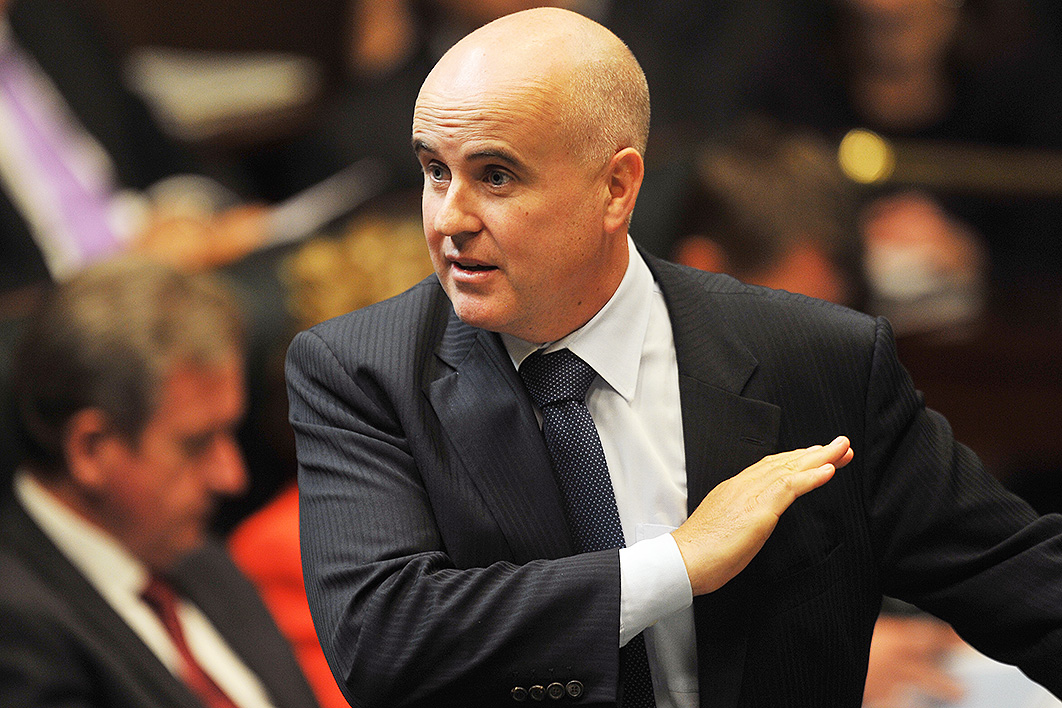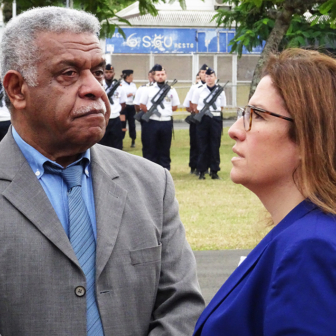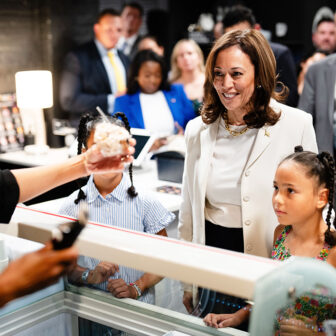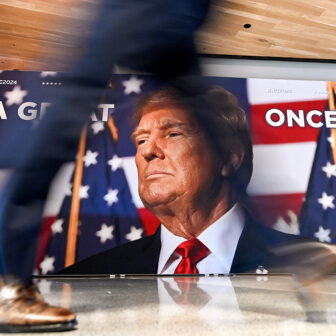In what would be the most dramatic shake-up of Australian school education in half a century, former NSW education minister Adrian Piccoli has called on governments to fully fund all primary schooling — Catholic, independent and public alike. Piccoli, director of UNSW’s Gonski Institute for Education, made the call as he released new research documenting Australia’s continuing failure to deliver on the national goals for schools, espoused most recently by education ministers last December.
“It is the socioeducational status of students, even ahead of the work of schools, which is having an increasing impact on student achievement,” a forthcoming Gonski Institute paper finds. At the heart of our problems, it suggests, is the nature of choice and competition between schools and sectors. “Our schools are increasingly characterised less by what they do and more by who they enrol.”
The solution, Piccoli believes, is to create a level playing field in which all schools are resourced and regulated on the same basis. “We have one of the most segregated school systems in the world,” he says. “Australia needs dramatic reform to deal with this.” Specifically, he proposes that non-government schools, in return for full public funding, should be subject to the same prohibition on charging fees as government schools and required to enrol all comers.
As the Gonski paper puts it, “A public charter of operation and obligations needs to apply equally to all funded schools.” Under such a charter, private schools would continue to be self-governing and could maintain their religious character, just as church schools do in Canada and New Zealand. But they would be regulated in the same way as all other schools.
Piccoli takes this a step further. “Why not fully fund all schooling options in primary education given that they are almost fully funded already?” he suggests. “I propose only primary schools at this stage because it’s where the smallest funding gap is.”
Two premises underlie Piccoli’s proposal: first, that the intense concentrations of social disadvantage found in the Australian school system are a major driver of declining student wellbeing and achievement; second, that those clusters of disadvantage are generated by competition between fee-charging schools and free, comprehensive schools.
He is on solid ground in both respects. Consider this statement by George Pell when he was archbishop of Sydney in 2006: “Catholic schools are not educating most of our poor, especially at the primary level. Seventy-two per cent of Catholic students from families with lowest third of family income attend government infant/primary schools and only 19 per cent attend Catholic schools.”
Bishops may not have been so candid since then, but we know from My School that the proportion of disadvantaged students at systemic Catholic schools has further declined over the last decade, and the share at independent schools is even lower.
Because it is more difficult for low-income families to access fee-charging schools, children from disadvantaged backgrounds are under-represented in those schools and over-represented in public schools that can be just minutes away. The degree of disadvantage in one sector is an artefact of the lack of it in the other. Of the schools in which more than half of the children come from highly disadvantaged families, 95 per cent are public schools.
In practice this means that the kids who bring the least cultural and social capital through the school gates — whose educational success is most dependent on what happens in school — have the odds further stacked against them. Students with acute learning challenges find themselves vying for teacher attention with others in the same boat, in classrooms disrupted by behaviour that is ultimately the product of poverty and social dysfunction. The aspirations of the school community are accordingly low, as is teacher morale, recruitment and retention.
Piccoli views these arrangements as a recipe for educational failure. As the Australian Council for Educational Research has repeatedly found, the social background of students’ peers has as powerful an effect on their educational achievement as their own family background. The Gonski review recognised this, recommending extra funding for schools with high concentrations of disadvantaged children, but Piccoli is proposing that we can tackle the root cause of the problem. Making all schools fully taxpayer-funded and therefore free to users, his argument goes, would produce a more even distribution of advantaged and disadvantaged students through the whole school system, substantially reducing social segregation and removing a major structural driver of educational underperformance.
But would it be affordable? Piccoli’s argument is that the rapid growth in public funding to non-government schools in recent decades means it wouldn’t be a huge leap. By 2017, non-government schools received somewhere between 83 and 105 per cent of the recurrent public funding going to government schools that enrolled similar students. So it would now cost only an additional $1.1 billion annually to fund all non-government schools at the same level as public schools. Topping up capital funding to equivalent levels would cost the government a further $966 million each year. For perspective, the annual cost of the federal government’s Stage 1 tax cuts is $8 billion, and the additional annual cost of each of the Stage 2 and 3 tax cuts is likely to be double that.
Piccoli has suggested that wealthy schools wishing to continue charging fees would no longer receive as much, or perhaps any, government support, creating savings. Governments provide more than a billion dollars in subsidies annually to around 200 exclusive private schools where the fees are already higher than the total income per student at public schools. Starting with primary schools would reduce the initial cost of the plan further, although secondary schools are where the most acute social segregation occurs.
There’s a larger point, too. If Piccoli’s case about the structural cause of Australia’s declining educational performance is correct, the increase in government outlays would be more than justified by greater productivity, more jobs, better health, and reduced crime and welfare dependence.
Research conducted by Deloitte Access Economics for the federal government in 2016 found that a 5 per cent increase in scores in the OECD’s Programme for International Student Assessment would increase GDP by around $12 billion by 2066. The report could have pointed out that this figure also represents the cost of the decline in our PISA scores — also around 5 per cent — so far this century. Ultimately, making users pay for school education is costing us far more than it saves our governments.
A more equal distribution of obligations and responsibilities across the school system also has the potential to transform the incentives faced by individual schools, shifting their focus from recruiting the “right” students to making the students they have brighter. Education researcher John Hattie uses the term coasters to describe schools that look successful simply because they are populated by the offspring of the affluent and well educated. They are good at recruiting students with natural aptitude, but they don’t add anything to our overall educational achievement. With less power to discriminate over whom they enrol, the coasters would be compelled to focus less on marketing and more on improving learning.
If there is a sound educational case for Piccoli’s plan, what about the politics? At the moment, Catholic and independent schools can have their cake and eat it too: they are publicly funded to almost the same level as government schools but retain the right to charge fees and enrol selectively. Why would private schools or parents entertain any disturbance of the status quo?
One reason is that current arrangements don’t actually provide choice in a meaningful way. Think of those less well-off Catholics who overwhelmingly attend public schools, and do so in much greater numbers than their more well-off co-religionists. Piccoli’s proposal would enable low-income families to exercise their first preference for their child’s education, an initiative that would likely also resonate with those parents who struggle to pay the fees at their non-government school of choice. It could also appeal to those religious figures for whom the under-representation of disadvantaged kids at their schools is a cause of unease.
And in terms of immediate organisational self-interest, full public funding would position non-government schools to expand their enrolment share. Christian Schools Australia made the case for full public funding of non-government schools in its submission to the Gonski review. National Catholic Education Commission executive director Jacinta Collins has greeted Piccoli’s proposal with qualified approval. It “may have some merit,” she told the Sydney Morning Herald.
But other parts of the non-government sector would likely reject full public funding as long as it meant they could no longer charge fees as well. The most prestigious independent and Catholic schools wouldn’t readily relinquish the market power their present status provides, and for some parents the right peer group and a resource advantage over neighbouring schools are precisely the attraction.
But if Piccoli’s proposal became a serious possibility, the non-government sectors would have to think very carefully. They could not rationalise rejection on the grounds of choice, because that’s precisely what Piccoli’s proposal provides. Nor could they appeal to affordability, because they would be arguing against free schooling. To continue to demand the right to charge fees and enrol selectively would simply be to insist on an unsustainable claim to privilege, aided by the public purse.
Because Piccoli’s approach affirms that every family, as citizens and taxpayers, is entitled to access a fully publicly funded education — and that there shouldn’t be a financial penalty attached to a conscientious choice of a non-government school — it invites a coalition between two groups that currently exist in opposition: those who want education to be free and those who want choice. This potential coalition would cut across the secular–religious lines just as decisively as when Protestant and Catholic school authorities decided in the mid twentieth century that their common material interests were more important than their spiritual differences.
Such a coalition would be a necessary precondition for fundamental change, but proponents of public education would have reason to baulk, fearing that free private schools would lead to a significant loss of enrolments. In the short term, the fear would be justified — the whole objective is to make church schools just as accessible and inclusive as public schools. In the long run, though, it would mean that schools will compete for enrolments on the basis of what they do rather than on their attractive student profiles and resource advantages.
A range of complex issues would need to be tackled to achieve this new settlement. “The starting point has to be cross-sectoral and wider community consultations to establish consensus on the purposes and principles which should underpin our schools,” says the Gonski Institute report. Its immediate achievement is to raise the thorny question of how responsibilities and obligations, as well as resources, are shared across our school systems.
The alternative to confronting this question is to continue drifting along in a post-Gonski torpor, imagining ourselves to be closing in on needs-based funding, the supposed panacea for our educational ills, as it grows ever more elusive. Between 2009 and 2018, government funding for private schools increased by more than five times the increase for government schools, even though the latter enrol four in every five disadvantaged students, research published in June in the Nine newspapers revealed. In response, the Grattan Institute’s Peter Goss observed that private schools are on track to receive their full needs-based funding allocation by 2023 while “very few government schools will ever get fully funded.” As he added, “By 2030 we’re going to be having this same argument and it’s all predictable from now.”
It is predictable, in part, because Australia continues to have two conversations about school education that never really join up. On the one hand is the central challenge of ensuring our schools are adequately resourced to meet our students’ educational needs, a challenge we are abjectly failing. On the other is the old debate about why some parents have to pay out of their own pockets for school education and others don’t, an argument that has simmered away since before Federation.
The trajectory of government funding over the last decade will seem perverse to many. But parents who pay for private schooling — and who contrast their own experience with that of neighbours, sometimes better off than themselves, whose children enjoy a fully publicly funded education — have reason to see things differently. When these parents learn that their child’s school, and other schools like them, are receiving more government support than ever, they are apt to think that this is only fair.
What Piccoli’s intervention points to is a way we can join the two conversations up, comprehensively resolving the old debate so as to create room to address the urgent contemporary questions. “We don’t think you should have to pay school fees anymore — and we’re going to provide the public funding for your school so you don’t have to,” a politician who ran with this proposal would be able to tell the electorate. “You have the right to choose your child’s school, and you shouldn’t be financially penalised for your choice.”
Having settled that question once and for all, we would be in a much better position to recognise the corollary. Once a private school is funded just like a public school, it no longer needs to charge fees — and suddenly a level playing field, in which all schools are free and inclusive, and facilitate choice and diversity, looks possible. •




